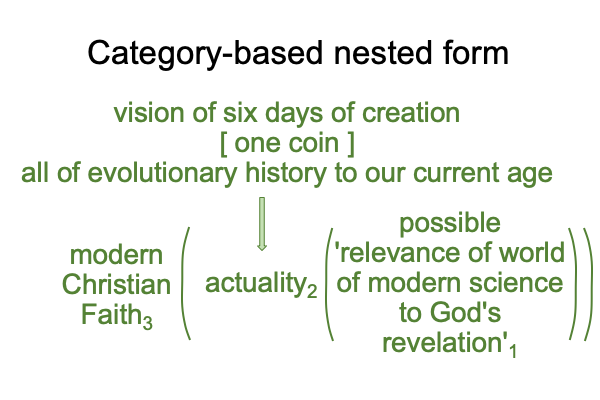0081 Now is a good time to note how current literature, such as Loke’s book, may be re-articulated and re-interpreted in light of three new hypotheses on human evolution, contained in Razie Mah’s masterworks, (1) The Human Niche, (2) An Archaeology of the Fall, and (3) How To Define the Word “Religion”. The hypotheses that (1) the human niche is the potential of triadic relations, that (2) our current Lebenswelt is not the same as the Lebenswelt that we evolved in, and that (3) spoken words are defined by their potentials, in addition to the fact that they occupy positions in two arbitrarily related systems of differences, change the face of scientific inquiry into humankind.
0082 With these three hypotheses, the Christian can now picture the Pentateuch as revelation, as well as a testimonial available to scientific inquiry. We also have testimony from royal archives throughout the ancient Near East, in the form of recovered and translated cuneiform tablets. Thus, God’s revelation enlivens ancient testimony about the current human condition, bringing that testimony to life.
0083 Are revelation and ancient testimony two faces of one coin?
I return to Loke’s third chapter, discussing the time spans of creation.
0084 There are two concerns for the modern Christian.
One pertains to the time scales reported in the Genesis text.
The second pertains to the time scales of the evolutionary record.
The first is revelation. The second is scientific testimony.
0085 If the revelation is a vision, then the scientific testimony includes all of evolutionary history, from the start of our solar system to the start of our current Lebenswelt. The two coincide when one reads the Biblical text through the lens of Peirce’s typology of natural signs. In this, the revelation itself testifies to the fact that one of humanity’s crucial adaptations involves sign-processing.
0086 Here is a picture of the nested form corresponding to Loke’s integrating approach.

0087 God’s revelation extends to the times above the waterfall, which stand beyond the direct remembrance of those who live in the times below the waterfall.
